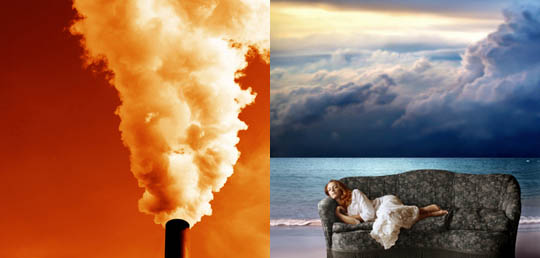



Coal is the dirtiest of all fossil fuels. When burned, it produces emissions that contribute to global warming, create acid rain and pollute water. Coal generates half of the electricity in the United States and will likely continue to do so -- it’s cheap and plentiful. Clean coal technology is an attempt to reduce harmful environmental effects by using multiple technologies to "clean" coal and contain its harmful emissions.
Ironically, clean coal technology is competing for government research funding with proven clean, alternative energy sources like, wind power, solar energy, biomass, tidal and geothermal. The good news is that residential solar panel installation is currently growing at a 50% rate since the cost of solar is now closing in on coal and other fossil fuel energy sources.
Coal is composed primarily of carbons and hydrocarbons. Its ingredients help make plastics, tar and fertilizers. A coal derivative, a solidified carbon called coke, melts iron ore and reduces it to create steel. But most coal -- 92 percent of the U.S. supply -- goes into power production. Electric companies and businesses with power plants burn coal to make the steam that turns turbines and generates electricity.
The byproducts of coal burning are sulfur dioxide, nitrogen oxides, particulate emissions, carbon dioxide, radionuclide and mercury.
- Coal washing tries to purify the coal before it burns. The coal is crushed into small chunks and washed. Some of the sulfur that exists in tiny specks can be washed out of the coal in this manner.
- Wet scrubbers remove pollutants from furnace flue gas. The polluted gas is sprayed with a liquid to dissolve or absorb pollutant gases and capture dust particles in liquid droplets. Limestone can be made to absorb sulfur gases under the right conditions -- much like a sponge absorbs water.
- Electrostatic precipitators remove particulates that aggravate asthma and cause respiratory ailments by charging particulates with an electrical field and then capturing them on collection plates.
- Gasification is a process for the conversion of carbon-based materials such as coal into synthesis gas (syngas) that can be used to produce clean electrical energy, transportation fuels, and chemicals efficiently and cost effectively using domestic fuel resources.
- Carbon capture and storage refers to the separation and capture of carbon dioxide from emissions point sources (fossil-fired power plants and industrial facilities) or the atmosphere. The captured carbon dioxide can then be feasibly stored (sequestered) or converted in such a way as to mitigate its impact as a greenhouse gas.
Source: U.S. DOE, National Energy Technology Laboratory
Greenpeace released a report on May 5, 2008, titled False Hope, Why carbon capture and storage won’t save the climate. The report lists five key reasons that carbon capture is not a viable solution:
“CCS cannot deliver in time to avoid dangerous climate change. The earliest possibility for deployment of CCS at utility scale is not expected before 2030. TO avoid the worst impacts of climate change, global greenhouse gas emissions have to start falling after 2015, just seven years away.
CCS wastes energy. The technology used between 10 and 40% of the energy produced by a power station. Wide scale adoption of CCS is expected to erase the efficiency gains of the last 50 years, and increase resource consumption by one third.
Storing carbon underground is risky. Safe and permanent storage of CO2 cannot be guaranteed. Even very low leakage rates could undermine any climate mitigation efforts.
CCS is expensive. It could lead to a doubling of plant costs, and an electricity price increase of 21 - 91%. Money spent of CCS will divert investments away from sustainable solutions to climate change.
CCS carries significant liability risks. It poses a threat to health, ecosystems and the climate. It is unclear how severe these risks will be.”
Tags: clean coal, clean coal technology, clean coal fired energy plants, clean coal myth, what is clean coal, clean coal reality, pros and cons of clean coal
877-331-1235 | © Copyright DASolar.com.